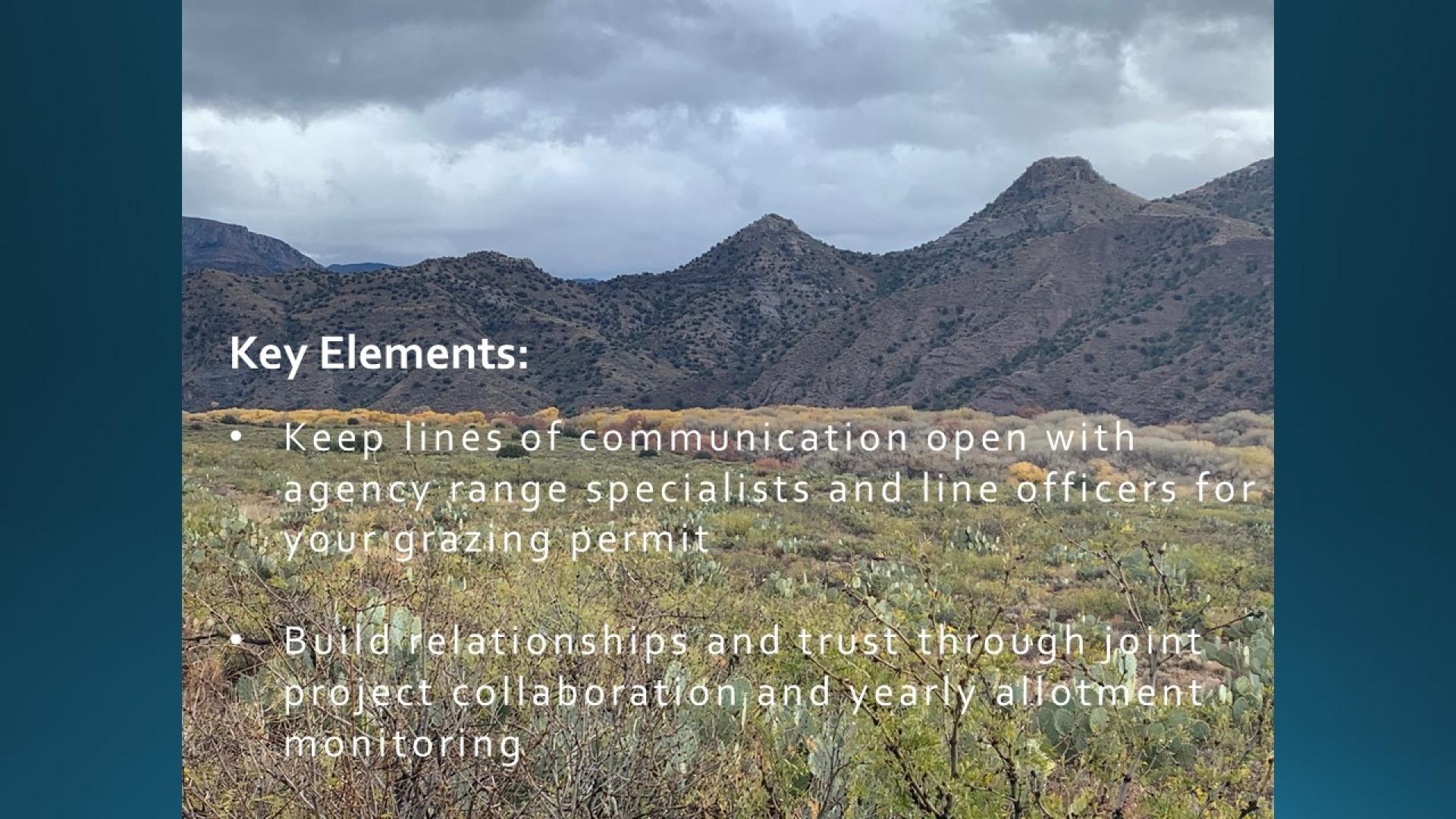
- Body
Because NEPA is a regulatory process, the US Forest Service and BLM must follow standard procedures in developing NEPA documents. Understanding these procedures will help you know what to expect throughout the NEPA process. All NEPA documents will contain the following elements:
1. Purpose and Need for Action: This is the first section of a NEPA document. It provides basic information on why a NEPA document is being prepared, e.g. to analyze the issuance of a term grazing permit.
2. Existing conditions: A review of the basic characteristics of the grazing allotment, past management, grazing history, and monitoring documentation. Annual Operating Instructions and monitoring data are important for documenting existing conditions. These documents and other data are used to identify resource management concerns, if any. Existing conditions are the context for future management. The existing conditions section may include:
- A description of the grazing allotment
- Important historical information about an allotment such as historical overgrazing or other resource management concerns that current and future management must address
- Past management actions and their success
- Factors that have influenced the success or failure of past management
- Summary of past monitoring data
3. Proposed Action: Typically, grazing permit renewals and range improvement projects require only an Environmental Assessment, or EA, a more limited form of analysis. An EA requires documentation of only the proposed action. If a more extensive Environmental Impacts Statement, or EIS, is needed, multiple alternative actions will be described. In Arizona, proposed actions will typically include provisions for Adaptive Management, an approach that allows for adjustment over time to address emerging challenges.
4. Environmental Impacts of the Proposed Action: An analysis of the likely environmental effects of issuance of a grazing permit or implementation of a range improvement. If the analysis in an EA determines that there are likely significant impacts, then an EIS must be prepared.
5. Supporting Documents and Compliance Information: Scientific studies cited in the analysis, monitoring data, endangered species compliance, archeology compliance, etc.
Tools
Further Reading
- Stern, Marc J.; Mortimer, Michael J., 2009. Exploring National Environmental Policy Act processes across federal land management agencies.
- MacGregor, Donald G.; Seesholtz, David N., 2008. Factors influencing line officers' decisions about National Environmental Policy Act project design and development.